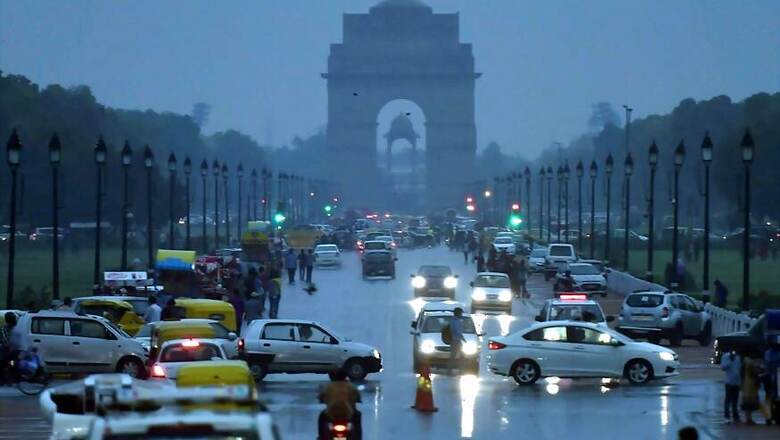
views
New Delhi: In a year when the rest of India witnessed "above-normal monsoon", the national capital recorded 38 per cent rainfall deficiency, the lowest rainfall in the city since 2014, according to the India Meteorological Department (IMD).
An IMD official said the city recorded 404.1 mm rainfall this monsoon — from June 1 to September 30 — against the 30-year average of 648.9 mm, a shortfall of 38 per cent. With 10 per cent more rainfall than usual this year, India witnessed an 'above-normal' monsoon which officially ended on September 30, IMD data showed.
The national capital witnessed surplus rainfall in the last two years — 770.6 mm in 2018 and 672.3 mm in 2017. The IMD had recorded 524.1 mm precipitation in 2016 against the long-term average of 648.9 mm and 515.3 mm in 2015. The city had gauged 370.8 mm rainfall in 2014.
In June this year, Delhi recorded just 11.2 mm rainfall against the normal of 65.5 mm — a deficiency of 83 per cent. The next month, it recorded a rain deficiency of 24 per cent, registering 210.4 mm rainfall against the mean of 276.1 mm.
August was also relatively dry, with only 119.6 mm precipitation occurring against the average of 247.7 mm — a shortfall of 52 per cent. The national capital recorded 74.1 mm rainfall against the normal of 125.1 mm in September — a 41 per cent deficit.
The four-month monsoon season officially begins on June 1 and ends on September 30. It starts withdrawing from west Rajasthan beginning September 1, but this year it has shown no such signs, according to officials.
Explaining why Delhi received less rainfall this year, Mahesh Palawat, vice-president, Meteorology And Climate Change of Skymet Weather Services, said the weather systems that originated in the Bay of Bengal moved west, deviating from their usual northwestward path.
That's the reason why central India witnessed an increase in rainfall and Indo-Gangetic plains recorded a decline in precipitation, he said. "Also, no significant weather system developed in the Arabian Sea this year. The two cyclones that formed in its northern part — 'Hikka' and 'Vayu' — moved towards Oman," Palawat said.



















Comments
0 comment